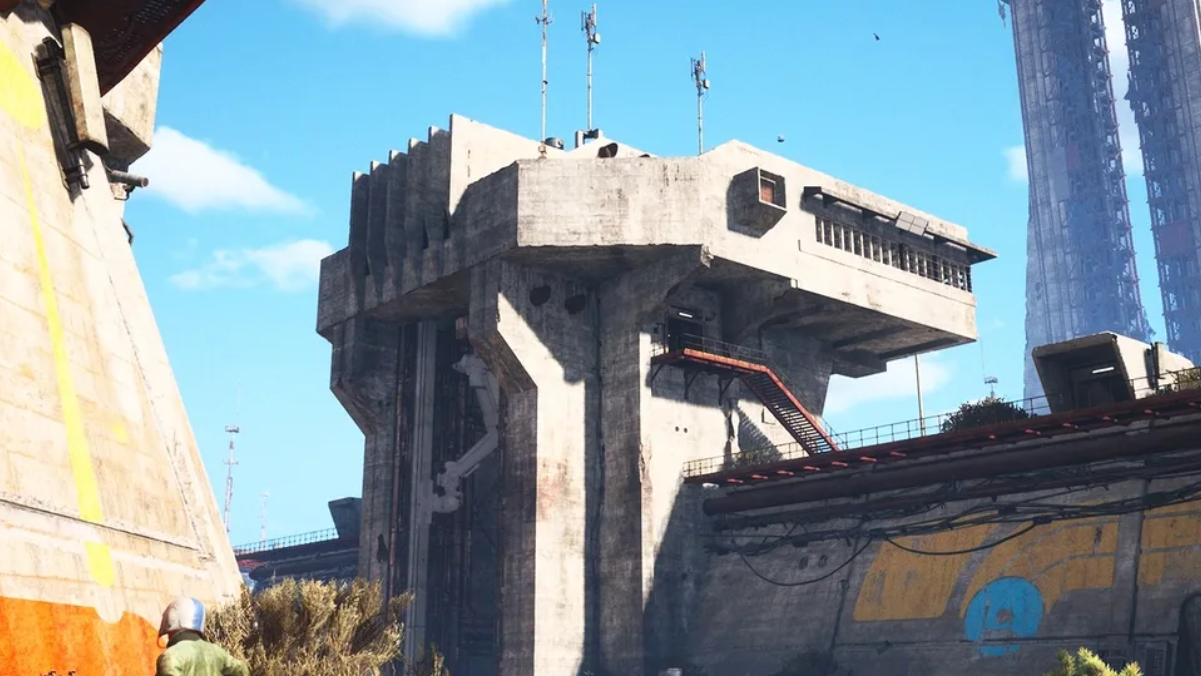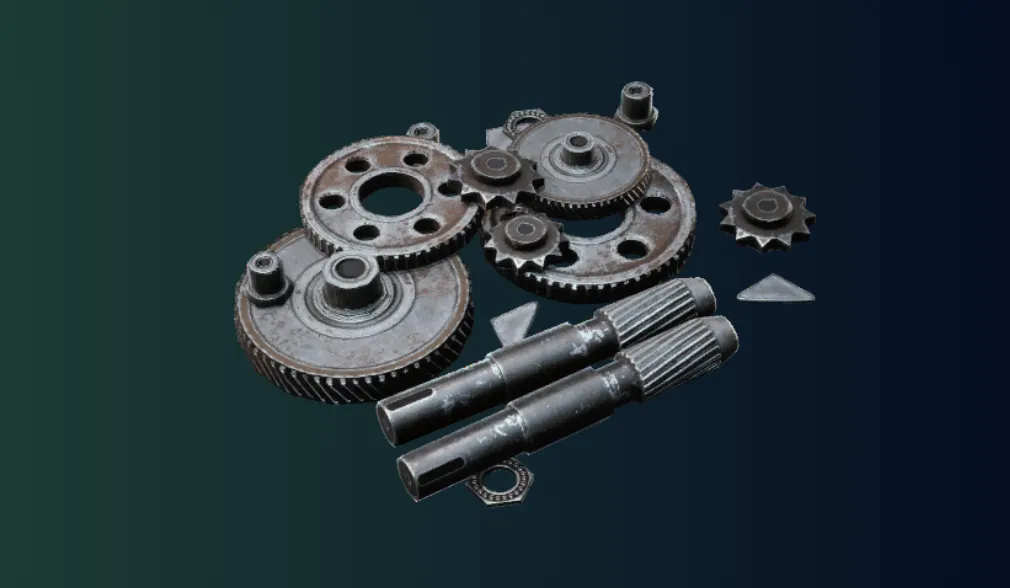Mechanical Components sit at the center of Arc Raiders’ crafting economy. They gate Gunsmith Level 2, many weapon upgrades, and a long list of attachments and blueprints. That makes understanding what recycles into Mechanical Components, and how to turn basic scrap into them, one of the most important early lessons in the game.
What Mechanical Components are used for
Mechanical Components are an uncommon refined material with a stack size of 10 and a relatively high sell value. More importantly, they are consumed in three key areas:
| System | How Mechanical Components are used |
|---|---|
| Gunsmith upgrade | Required to upgrade the Gunsmith workbench from Gunsmith 1 to Gunsmith 2, alongside Rusted Tools and Wasp Drivers. |
| Weapon crafting | Core ingredient in crafting many weapons and weapon mods such as Anvil I, Arpeggio I, Il Toro I, Osprey I, and multiple extended magazines and muzzle devices. |
| Weapon repair | Spent with Simple Gun Parts or Rubber Parts to repair and restore durability on uncommon weapons like Arpeggio I–IV and Rattler I–IV. |
| Advanced materials | Combined with Steel Springs to create Advanced Mechanical Components, and with ARC Motion Cores to craft Mod Components. |
Because they feed directly into stronger weapons and a higher-tier Gunsmith, Mechanical Components are the bottleneck material for a lot of early and midgame progression.
All sources of Mechanical Components
Mechanical Components come from three broad sources: scavenging, crafting, and recycling.
| Source type | Example methods | Notes |
|---|---|---|
| Scavenging (loot) | Mechanical loot areas on each map, vehicles with breachable hoods on Dam Battlegrounds, buses and high-value mechanical zones, mechanical-marked regions on the map legend. | Uncommon drop; more likely in high-value mechanical zones. |
| Crafting (Refiner) | Converting basic scrap (Metal Parts and Rubber Parts) into Mechanical Components at a Refiner workbench in Spironza. | Most reliable long-term source once Refiner is built. |
| Recycling (Scrapper) | Breaking down certain weapons, some upgraded common guns, Advanced Mechanical Components, and specific scrap items such as Turbo Pump. | Great for topping up when you are short by a few pieces. |
Crafting Mechanical Components in the Refiner
The game treats crafting as the default way to secure Mechanical Components once your hideout is set up.
| Recipe | Workbench | Result |
|---|---|---|
| 7× Metal Parts + 3× Rubber Parts | Refiner 1 | 1× Mechanical Components |
Both Metal Parts and Rubber Parts are common drops from mechanical loot areas and from recycling basic scrap and weapons. Once the Refiner is installed in Spironza, this recipe turns those low-tier materials into the uncommon refined material you keep running out of.
Before that, you need to build the Refiner workbench itself in your hideout. The Refiner requires a stockpile of Metal Parts and several ARC Power Cells looted from ARC robots. Once installed, it becomes the only guaranteed way to convert grindable resources into Mechanical Components whenever you need them.
What recycles into Mechanical Components
Recycling is the other major answer to the question of what actually turns into Mechanical Components. Several item categories break down into them when sent through the scrapper.
| Item category | Example items | Recycling outcome related to Mechanical Components | Use case |
|---|---|---|---|
| Uncommon (green) weapons | Arpeggio, Anvil, Beretta-style sidearms, other green-tier guns | Recycle into Mechanical Components and Simple Gun Parts (exact quantities vary). Durability does not affect output. | Primary way to convert surplus green guns into upgrade materials. |
| Upgraded common weapons | Rattler III, Ferro IV, Stitcher IV and similar | Once a white weapon has been upgraded using Mechanical Components, recycling that upgraded version returns Mechanical Components along with gun parts. | Occasional source if you outgrow an upgraded starter gun. |
| Uncommon weapon mods | Extended Light Magazine II, Extended Medium Magazine II, Extended Shotgun Magazine II, Compensator II, Muzzle Brake II, Shotgun Choke II, Stable Stock II, Angled Grip II, Silencer I | Break down into Mechanical Components and corresponding parts. | Useful when you loot mods you do not intend to equip. |
| Higher-tier components | Advanced Mechanical Components | Recycle into lower-tier Mechanical Components plus other materials. | Gives flexibility if you crafted or looted more advanced parts than you currently need. |
| Specific scrap items | Turbo Pump | Recycles into Mechanical Components and Oil; salvaging instead yields Steel Springs. | Choice point: take Mechanical Components and Oil or target Steel Springs. |
The rule of thumb is simple: anything that costs Mechanical Components to craft or upgrade will often give some of them back when recycled. That’s most obvious on uncommon weapons and upgraded common guns, which are explicitly designed to return the materials required for their own repairs and upgrades.
How weapons recycle into Mechanical Components
Weapons follow a consistent pattern when it comes to recycling:
- Uncommon (green) weapons recycle into Mechanical Components plus Simple Gun Parts.
- Rare (blue) and epic (purple) weapons recycle into Advanced Mechanical Components and higher-tier gun parts rather than basic Mechanical Components.
- Common (white) weapons do not give Mechanical Components by default, but specific upgraded variants (for example, Rattler III or Ferro IV) can recycle into Mechanical Components because those tiers consumed them during upgrades.
Players sometimes overlook the fact that durability does not change recycling output. A completely broken green weapon yields the same number of Mechanical Components and Simple Gun Parts as a pristine one. That makes broken or low-durability dupes the best recycling targets.
Scavenging Mechanical Components from the world
Looting topside does provide Mechanical Components, but on a much less predictable basis than crafting or recycling. They are tagged as a mechanical loot item, which means you are most likely to see them in areas marked with the mechanical icon on the map legend.
| Location type | Examples | Mechanical Components potential |
|---|---|---|
| High-value mechanical zones | Checkpoint on The Blue Gate, mechanical zones on Dam Battlegrounds | Higher chance to find Mechanical Components in mechanical containers; also higher enemy presence. |
| Vehicle clusters | Road behind North Complex elevator on Dam Battlegrounds, buses near the elevator, other car-packed roads on all maps | Vehicles with closed hoods can be breached; their engine bays have a decent chance to contain Mechanical Components. |
| Specific containers | Rovers in the Sandbox area of Stella Montis and other mechanical crates | Occasional direct spawns of Mechanical Components. |
On Dam Battlegrounds, a reliable loop for early players runs along the road just behind the North Complex elevator. Buses near the elevator and cars with their hoods down can be breached, and their interiors often pay out Metal Parts and sometimes full Mechanical Components. Because Dam Battlegrounds is the entry map, this route is an accessible way to learn the game’s “loot the machines for machine parts” logic.
How Mechanical Components themselves recycle
Mechanical Components are not a one-way tier. You can also recycle or salvage them back down into basic materials when you temporarily value more flexible scrap over refined parts.
| Action | Input item | Result |
|---|---|---|
| Recycle | Mechanical Components | 2× Rubber Parts and 3× Metal Parts |
| Salvage | Mechanical Components | 3× Metal Parts |
The recycling route is useful if you are short on Rubber Parts, while salvaging is a straightforward way to convert excess Mechanical Components into pure Metal Parts. Because crafting one Mechanical Components consumes 7 Metal Parts and 3 Rubber Parts, reversing that process is always a net loss; this down-conversion is about flexibility, not efficiency.

Planning Mechanical Components use across your workshop
Once the supply side is under control, the next challenge is deciding where to spend Mechanical Components first. Early on, they compete across three main sinks:
| Priority | Use | Why it matters |
|---|---|---|
| High | Upgrade Gunsmith 1 → Gunsmith 2 (cost includes 5× Mechanical Components) | Unlocks a large list of weapon mods and early weapon craft options that all require Mechanical Components. |
| High | Upgrade core early weapons (Rattler, Ferro, Arpeggio, Venator, Torrente) | Significantly improves magazine sizes, damage, and reliability of guns you use in every raid. |
| Medium | Crafting first copies of weapon mods (muzzles, stocks, magazines) | Provides strong quality-of-life and recoil control, but can often wait until Gunsmith 2 is unlocked. |
| Lower | Crafting Advanced Mechanical Components or Mod Components | Important later for higher-tier builds, but can be postponed until you have steady income of Mechanical Components. |
A practical rhythm emerges:
- Use scavenging and Refiner crafting to build a baseline stockpile.
- Feed Gunsmith 2 and one or two favorite weapons to a comfortable tier.
- Start treating extra green weapons and unwanted mods as recycling fuel to maintain your Mechanical Components float.
- Only then, spend the excess on Advanced Mechanical Components and Mod Components.
Mechanical Components are designed to feel scarce until you plug into both loops: crafting through the Refiner and recycling through the Scrapper. Once Metal Parts and Rubber Parts are flowing and surplus green gear is routinely broken down, the bottleneck eases, Gunsmith upgrades come online, and weapon tiers stop feeling out of reach.


